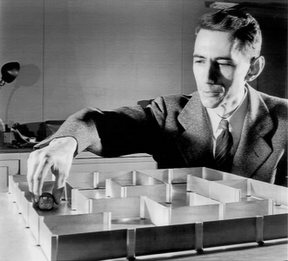Good morning, Whitewater
There are no public meetings scheduled for Whitewater today.
Over at the Wisconsin Historical Society website, there’s an entry commemorating an event from 1845: “Wisconsin Approves Free Schools.” The text of the text of the entry accurately places free in quotations (that is “free”):
On this date, under the leadership of Michael Frank, Wisconsin adopted “free” education for its residents. Frank’s plan narrowly passed the legislature by a vote of 90 to 79. Frank’s motivation for free education in Wisconsin was partially inspired by a similar campaign, promoted by Horace Mann in Massachusetts. On June 16, 1845 the first free school opened in Wisconsin. It was one of only three free schools in the country, outside the New England states. By August 1845, Wisconsin had five free schools in operation. [Source: Badger Saints and Sinners, Fred L. Holmes, pg 78-92]
It’s true, of course, that no public education is free; it’s a measure of the strength of the public education lobby that placing the word free in scare quotes seems almost defiant.
It’s a great anniversary in science today, as Wired notes that “Claude Elwood Shannon, the father of information theory and the man who coined the term bit, is born” —
Shannon’s 1938 master’s thesis, A Symbolic Analysis of Relay and Switching Circuits, used Boolean algebra to establish the theoretical basis of modern digital circuits. The paper came out of Shannon’s insight that the binary nature of Boolean logic was analogous to the ones and zeros used by digital circuits.
His paper was widely cited, laying the foundations for modern information theory. It has been called “one of the most significant master’s theses of the 20th century.” Not bad for a 22-year-old kid from a small town in Michigan.
That paper includes the first known use of the term bit to refer to a “binary digit.” Later wags would expand the terminology to include byte (usually an 8-digit binary number) and even nybble (half a byte, or 4 binary digits).

http://en.wikipedia.org/wiki/Claude_Shannon“
| Almanac | ||
|---|---|---|
| Thursday, April 30, 2009 | Sunrise | Sunset |
| Official Time | 05:50 AM | 07:54 PM |
| Civil Twilight | 05:20 AM | 08:25 PM |
| Tomorrow | 05:49 AM | 07:55 PM |
| Tomorrow will be: | 2 minutes longer | |
| Amount of sunlight: | 14h 4m | |
| Amount of daylight: | 15h 5m | |
| Moon phase: | Waxing crescent | |
